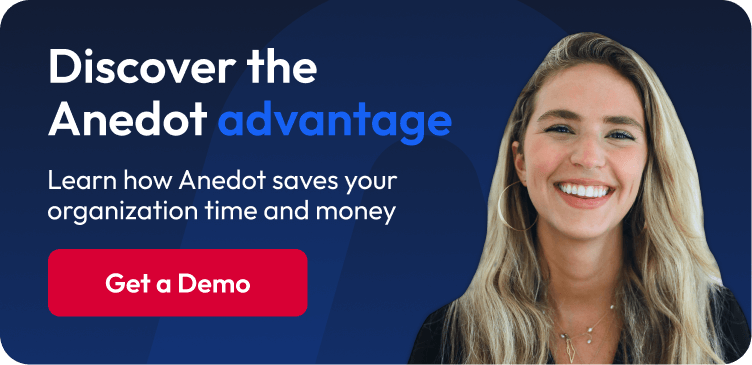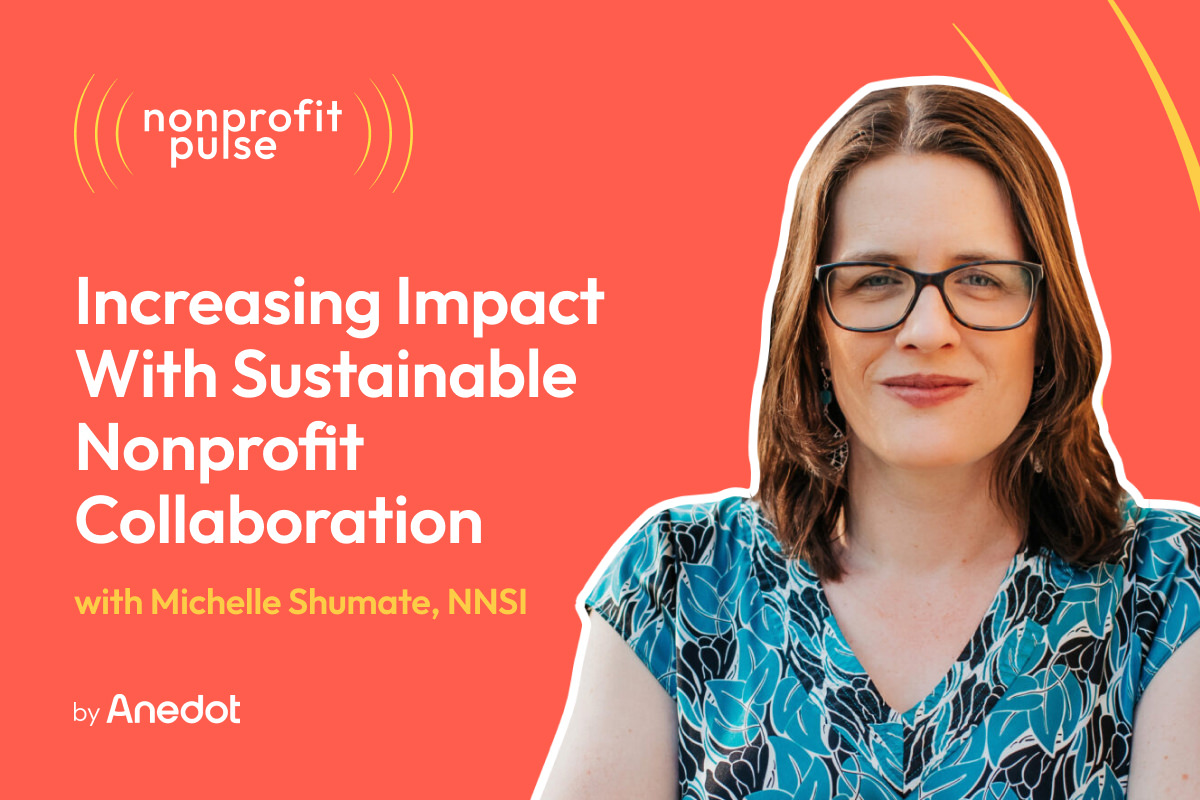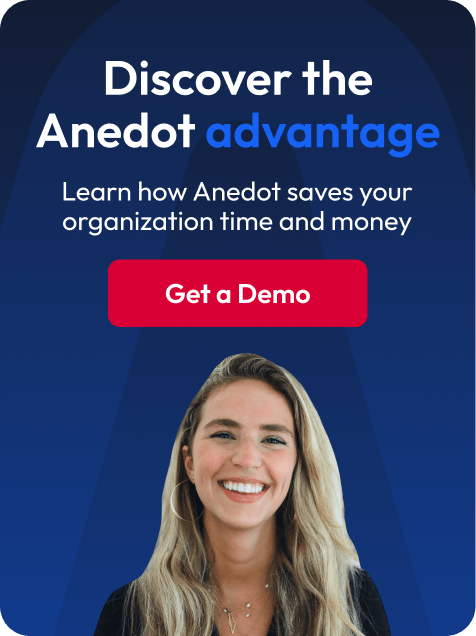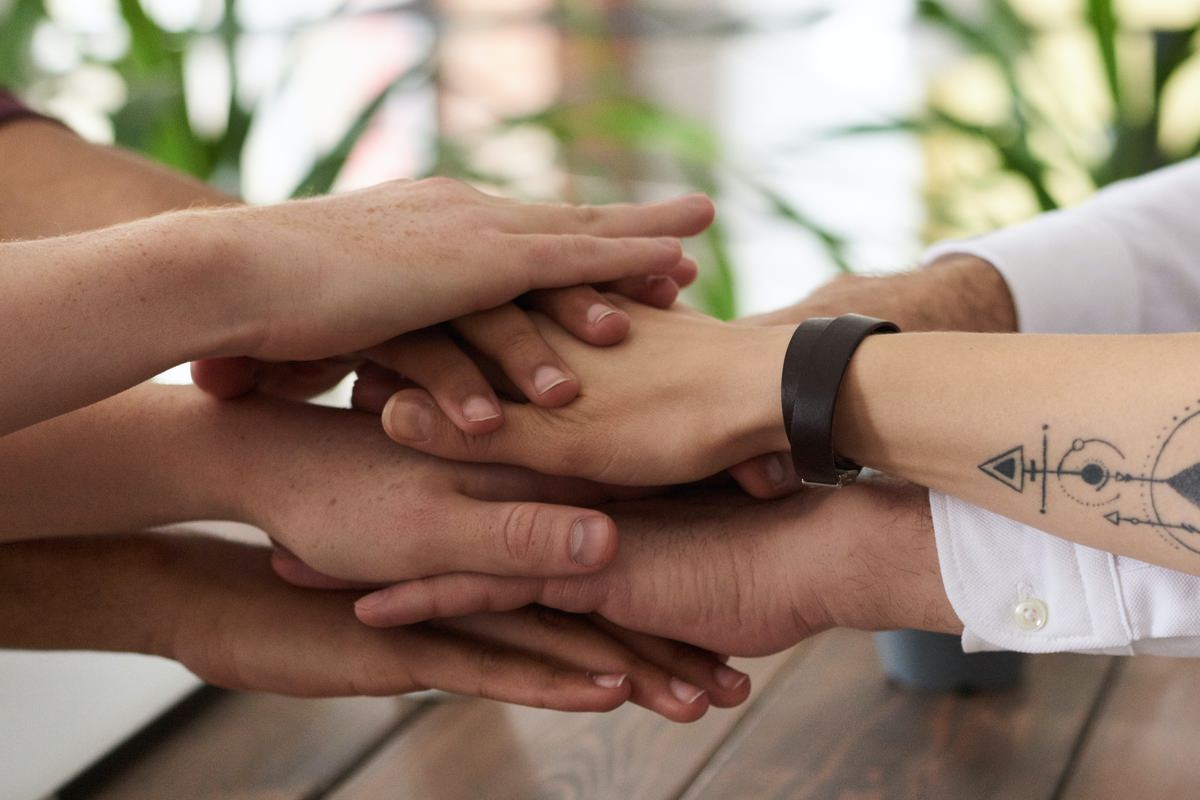Podcast episode transcript ↓
Josh:
We now have new data from a national study on sustainable nonprofit collaboration.
The study contains case studies and insights into how nonprofits can benefit from collaborating with like-minded organizations.
But what does this mean for your nonprofit? How can your organization get started?
I'm Josh with Anedot and welcome to Nonprofit Pulse where we explore trends, insights, and resources that help nonprofits accomplish their mission.
On this episode, we're joined by Michelle Shumate on the topic of sustainable nonprofit partnership.
Michelle is the founding director of the Network for Nonprofit and Social Impact, and serves as the Delaney Family University Research Professor at Northwestern University where her research focuses on how to design inter-organizational networks to make the most social impact.
Hi Michelle, thanks for joining us.
Michelle:
Thanks so much for having me, Josh.
Surprising findings from Sustained Collaboration Network's research study on nonprofit collaboration

Josh:
So today we're talking about sustained collaboration amongst nonprofits and maybe just starting out, could you share what sparked the idea for this study?
What were you hoping to uncover or solve?
Michelle:
Yeah. So I was approached by the Sustained Collaboration Network, which is a network of nonprofit funders and intermediaries that are really dedicated to helping nonprofits become more efficient, effective, and sustainable through collaboration.
And they had been funding nonprofit collaborations for many years, and they really wanted to understand what separated out those collaborations that had demonstrated successes from those who fizzled or that didn't produce the outcomes that they thought they would.
And so we wanted to really separate those two out. So I got a chance to screen about 60 collaborations, did a deep dive into 20 of them, but 14 of those were ones that really had outstanding successes and the other 6 didn't.
And so it was a chance to do a real comparison between those two groups.
Josh:
Yeah. So I'm interested in the findings of the study (2024 Insights Report: Unlocking The Power of Sustained Collaboration).
Were there any findings that really stood out or surprised or challenged you, as you wrapped up the study?
Michelle:
Yeah, I've been doing collaboration research from nonprofits for 20 years and so a lot doesn't surprise me anymore.
But this did.
There are these, this way of doing collaboration called an asset transfer, which sounds very legalistic, and legalistic in terms of just, a little bit of a jargon term, but what it really means is that one nonprofit is transferring some of its assets.
It's a program, intellectual property, something along the lines from its organization to another.
And I kind of thought as I started this out, okay, one that's really kind of worrying.
And two, okay, I can see why a nonprofit would want to do that if it was going to try to sunset a program or, you know, maybe it's about that.
And then I met these leaders of Asian Youth Center, and the Share Food Program, and the Andy Roddick Foundation, and all of them were using asset transfer strategically to do some pretty impressive stuff.
They were doing it to be able to innovate in a way that they couldn't have done by home growing a program.
They were using asset transfers to do culture change in the organization.
Asian Youth Center was making a dramatic culture change in the way that they approached youth criminal justice and, preventing, to a more prevention standpoint.
And because of that, they were able to do some pretty incredible things they couldn't do any other way all through asset transfers. Totally surprised me.
How to choose the best collaboration model for a nonprofit organization

Josh:
Yeah. So you've explored a lot of different models in your study.
Some of them include shared services, alliance, integrated organizations.
Can you talk about how a nonprofit might choose the best model for their particular context and situation?
Michelle:
Yeah. Great question.
And it's one of the reasons why I'm a big fan of micro grants from foundations to help nonprofits get educated about the wide range of collaboration possibilities, because it's not something that we've talked about in the sector.
But if I was going to offer just some concrete advice outside of maybe an education session, from my perspective, it's really about the outcome that you want to get.
If you're really after efficiency in this research, the only way that you consistently get that is through shared service collaboration, where you're doing back office kinds of things, where you may be doing joint purchasing.
If you're after doing something like getting new funding or really about program growth or you're really thinking about innovation, integrated organizations are the ways that it paid off in this study.
But if you're more interested in something like bigger policy wins than you could do as an individual organization or a system level outcomes where you're thinking about how do we help a group of people in our state, right, to be able to achieve an outcome, or you're thinking about like quality improvement among a set of organizations.
That's when alliances and networks really worked out best.
And so for me, it's really about matching the outcome that you want with the form that's likely to get you there.
Case study on how a nonprofit benefited from collaboration

Josh:
So thinking about the case studies, is there a particular story of collaboration that really transformed the organization?
And if so, what made it successful?
Michelle:
Yeah. One of the beauties about doing case study research, one of the reasons I love this form of research is it's nothing but stories. Right?
So I walk around carrying these stories with me all the time.
And I think the one I'd highlight, at least initially, is DVBeds. DVBeds started out in Dallas, Texas, among domestic violence shelters.
And what had happened is the Dallas police had decided to, and in time, they were called to a home where there was a domestic violence situation, do a lethality assessment.
And they were then referring many, many times more than the shelters could hold in Dallas to those shelters, to those domestic violence organizations.
And so this led them to come together and say, okay, what are we going to be able to do about this?
How can we begin to share resources? How can we use our beds most effectively?
And they began to do some customer journey work, which is, you know, as somebody who’s experiencing domestic violence, what was happening is they would call their first shelter.
They would talk to the intake worker, they would tell the most horrible private things in their lives, and then that person would say, that's really bad.
I'm so sorry, I don't have a bed for you. Here's the number of another place you can call. Right? And they would have to do this again and again and again.
And so they've really felt like this is a problem the way that we're operating as independent organizations does not work.
Let's instead build a system where at the end of that call, if you don't have a bed, you can say, I can see such and such shelter who is across the way, or down the road or maybe 30 minutes away.
They have a bed that would work. Let me get them on the line for you, and I'll make sure that you can get into a place, right?
And that's where DVBeds was born. So it's a daily, requires daily collaborations from the organizations that are in it.
At this point, they have 29 shelters and 12 non-shelters facilities. They cover the entire state of Texas and part of Oklahoma.
And any time that somebody calls one of those shelters, they can log in and they can help place them in a bed. And that bed might be somewhere that's further away.
If they have a safety concern of being found out, it can be closer to other kinds of family.
And they have partners who can provide transportation. That system sees 50,000 logins every year. And so what that's meant is that people are getting more shelters.
Those bed utilizations are up. It means that rural shelters are seeing more capacity, right?
And they're getting, more sustainable funding because they're able to serve more clients and for a lot of folks who are intake workers, this makes the job a lot better, right?
Because you don't want to be the person who's saying, I can't help you, I can't help you, I can't help you all the time. You now can say, I have a solution for you. Let me make a call.
Josh:
I love that, and I love the human care, the personal care side of that.
You know, it's one thing when you're, trying to remove or reduce friction on a software sign up or, you know, some type of event sign up.
But when you're removing friction because it's retraumatizing, people who are trying to sign up for services, that's just huge.
And I love the the attention there and the personal care.
Two potential challenges nonprofits can face when pursuing collaboration

Josh:
So, thinking about challenges, Michelle, you know, a lot of leaders may be listening to this and thinking, okay, this sounds interesting.
This is something I want to study more, but, I don't know what I don't know. And that is scary to a lot of nonprofit leaders.
So could you share some challenges that nonprofits are going to face when they start to collaborate? And maybe any tips you have that they might avoid these particular challenges?
Michelle:
Yeah. So two come to mind because remember, we had those unsuccessful collaborations that we studied too. We didn't just study the successes.
One of them that showed up frequently is rushing into too fast.
A lot of leaders don't slow down enough to build the relationships and do the due diligence necessary in order to form a real collaboration, and that can get you into trouble.
One of the collaborations that we looked at, who did not actually form a merger that kind of taught me this lesson in a really remarkable way was Full Spectrum Features, which is a nonprofit film company here in Chicago.
And they were approached by a group we're going to call the Film Festival. Everything looked good on paper.
Historic film festival, could be a good partnership. They started to have those conversations. Mission alignment looked good. Value statements looked the same. They were doing, you know, there was a possibility here.
They decided though, to take it slow. The way that, Eugene Park is the executive director there, talked about it is, he said, decided to go on a date before they got married.
Like that's the way he thought about it. So they decided to co-produce the film festival together and discovered, oh no, this is not what we thought it was.
They're really messy, and this has all sorts of risks we did not know about.
And they decided after their date they were not going to get married. This was not a good idea moving forward.
If they had jumped in before going on the date, they would have had a lot of regrets.
That's what I found in most of our successful collaborations, is that they took the time to do the work ahead of time to not only figure out does this makes sense on paper, but to do the real due diligence to do the feasibility analysis and that work to slow it down.
The second one is, that where nonprofits get in trouble is what I call big idea, no buy in.
And this is where one nonprofit has a great idea, a fantastic idea, one that absolutely everybody is, they are for sure going to buy into.
And they come into this collaboration going, here's what we're going to do.
And everyone looks around like that seems like it's good for you, but it's not good for us, right?
They haven't done the work to see if it's really a shared interest.
This showed up, actually in the early days of the Phoenix Youth Arts Collective, which is a performing arts youth groups in Phoenix, Arizona.
And when they, Arizona School for the Arts first convened, all these folks are like, we're going to build a performing arts center on our campus.
And everyone's like, yeah, that'd be good for you. But we don't want to build a performing arts center on your campus, right? It doesn't go anywhere.
So I think what needed to happen is that they needed to do more listening than proposing.
And that's something that can get you in trouble early on, is if you come in with that preconceived idea of like, oh, this is what's going to pay off. It usually doesn’t.
Josh:
Yeah, that's such an important point. And I was involved with an organization that was going to build a community center, in a certain area in the Midwest.
And, you know, like you said, big vision, exciting, objectively a great idea.
But once we started pulling in the different, kind of community stakeholders, right, that vision all of a sudden was being challenged in ways that we couldn't possibly have foreseen.
We just didn't have the perspective to understand how the community, those that would be serving, would react or respond or relate to this community center. And I think that is massive.
The role leadership plays in creating sustainable nonprofit collaborations

Josh:
Yeah. So thinking about leadership, you know, a principle that comes up on this podcast over and over is everything rises and falls on leadership.
So kind of a question about leadership, how important is leadership in making collaborations work?
And, you know, can you at what levels of the organization maybe does there need to be, kind of hands on leadership versus just blessing, right?
And then can you share an example of where leadership was a game changer for a collaborative project?
Michelle:
Yeah, I think that, you know, keeping with the theme of the podcast, yes, leadership is essential.
I think that it's important to have buy in, certainly at the C-suite level, but also in the board.
It's not enough just to get the staff involved in collaborations. If you don't have board buy in, it's not sustainable over time.
The leader that I'd point to that who I think is just really a great exemplar of this, her name is Aina Gutierrez. She is the executive director for the Rebuilding Exchange in Evanston, Illinois.
Great workplace development. Also rebuilding, recycling, kind of, reuse center.
And she led a merger. And one of the things that she talks about in that process is the importance of leading collaboratively and making sure that everybody gets a chance to exercise leadership in that merger process.
So that meant for her making sure that, initially when the boards got together for this merger, that there were committees around the key parts of the merger, that each of the boards were working collaboratively and taking on pieces of it, but it also meant once the merger was starting to get implemented, handing over some decisions to the staff and having them exercise leadership too.
So she would, the staff chose the new logo and they chose the new brand. She made sure that they all had input and were part of that.
And she's really been a leader who's thought a lot about how do you think about culture and putting those pieces together around a merger, because often when you put two organizations together, you end up with two organizations that are kind of taped together in some ways.
And she's really worked to make sure that it is one new organization as a result at the end. And that has meant being really thoughtful about culture and relationships and making sure that there are regular points where she's connecting and celebrating all of the staff, no matter what location she's at.
And so I really admire her as a leader and somebody who immediately comes to mind as soon as you bring up leadership and why it's so important.
Josh:
Yeah. And I love the part of bringing others along and the leadership development aspect of that, because, you know, when you get three, five years down the road from that and you've got, team members in your organization who either did have a hand in the project that really transformed the organization or didn't.
I think all of us would choose to have team members who had a part of that transformation.
And a lot of times it can be seen as, well, we want to keep things as, we want to reduce complexity. We want to reduce any relational challenges that come involved with having these folks in the project.
But at the end of the day, it's a huge need for mid-level folks and even senior level folks to be involved, and learn and grow and be a part of this transformation of the organization.
It just, it solves so many woes, I think, down the road to have that level of involvement.
Michelle:
Absolutely. And I think about some of the long standing collaborations that we studied, ones that have been in ten years, right?
And all the CEOs who are originally part of those collaborations had left, right? But what keeps folks coming back? It was that staff engagement.
It was the ability to have more than just those senior leaders making the decisions.
It's their board buy in, it's their mid-level staff buy in. That's what makes this sustainable in the long haul.
Two notable nonprofit collaboration trends

Josh:
I love that. So thinking about trends, you know, at Nonprofit Pulse, we explore trends, latest nonprofit trends, insights, and resources that help nonprofits accomplish their mission.
So I love getting to ask trend questions. And as a researcher, you are, I know on top of that and aware of what's going on.
So when you think about the trends of nonprofit collaboration, where do you see it heading?
Do you think it'll become essential for nonprofits to collaborate in order to be more efficient and effective as we go through 2024 and into the next five, ten years?
Michelle:
I'm really seeing two kind of trends that I think are exciting.
One of them is this recognition that collaboration should be a strategic tool in every nonprofit leader's toolbox.
It doesn’t mean that they're going to use it all the time. But knowing that it's a tool for strategy, not just efficiency, is something that I think is dawning on a lot of leaders for the first time.
That you can get nonprofit innovation, you can get to be in a new strategic area.
You can even do culture change by deploying collaboration strategically. That's a new realization for a lot of leaders that I'm hearing.
The other piece of this is actually on the funder side. I'm seeing a lot of funders realize, oh, we need to be supporting nonprofit collaboration in a different way than we're doing that.
And part of that is because, I'm certainly here in part because the Sustained Collaboration Network promoted this.
But I'm also seeing it in terms of just foundations who are saying we're going to walk the talk, we're going to bring our foundations together, and they're going to co-locate.
We're going to find ways to do pooled funds. We're going to find ways to support nonprofits and not be too independent.
That's, I think, a new and exciting trend in this space.
How to get started with pursuing nonprofit collaboration

Josh:
So thinking about, nonprofit collaboration and nonprofits who are thinking, okay, let's take a next step, what do we get started?
What would be your advice for next steps? For first steps?
And what would you say to nonprofit leaders who may be on the fence or hesitant to pursue this?
Michelle:
I think you don't have to jump in. You know, to use Eugene Park’s analogy, you don't have to jump into collaboration thinking, I'm going to get married.
It's okay to do a little looking around first, right? And maybe that first step is learning about your options.
Learning what's the difference between an asset transfer, versus a merger, versus a joint project, and why you would choose each one?
There's a lot of opportunities to do that. Community foundations often host these kind of sessions.
There are micro grants that are available certainly through the Sustained Collaboration Network funders and other funders. That's a great place to start.
And then go slow, right?
Apply for funding to do some exploration. And that might mean I've got a partner and I'm ready to do a feasibility analysis to see if we could maybe do some back office collaboration.
Does it make sense for us to pool our IT systems? Or maybe that is I'm going to do an exploration kind of process where I'm going to see is there a real opportunity for a merger and do the due diligence needed?
Or maybe that I get a group of folks together and I see, during an exploratory grant, is there a common agenda here, or are folks going to say, oh no, that's your great idea, but that's not our idea, right?
Like, you don't have to jump all the way into a long term, sustained collaboration.
Start small, start by learning, start by exploring, and increasingly start by looking around and finding little pools of funding that are going to help support you in that process.
Josh:
I love that, that principle of let's crawl, before we walk, before we run, and it sounds like that's particularly true with nonprofit collaboration.
Michelle:
Absolutely. Yeah.
Closing thoughts

Josh:
So Michelle, for the last question today, it's something we ask all of our guests, and it is, if you were standing on stage in front of a thousand nonprofit leaders and you could share one thing about nonprofit collaboration, what would you share?
Michelle:
I would say that nonprofit collaboration should be a strategic tool in your toolbox to enable you to achieve social impact.
Josh:
Love it, love it, and I hope our audience will research this more.
Consider taking next steps. And, Michelle, how can our audience learn more about the study, and find out more about the network?
Michelle:
So the study is available for free at Sustained Collaboration Network, and you can see the Events & Publications page where you can download copies of the study.
You can also check out the Sustained Collaboration Podcast mini-series where we interview lots of these leaders.
And so you can hear in their own words, their stories, and how they went on the journey to the collaborations that they have today.
And both are great resources to learn more.
Josh:
Awesome, awesome. And as always, you can find those links in the show notes at Nonprofitpulse.com.
Michelle, thanks so much for coming on and sharing this. And, I just know it's going to be helpful for our audience.
Michelle:
I really enjoyed the conversation. Thanks, Josh.
Josh:
Thank you.
Hey, thanks for listening.
If you enjoyed this conversation, please share or leave us a rating and review wherever you listen to podcasts.
Also, head on over to Nonprofitpulse.com to sign up for our monthly newsletter, as well as check out all the links and resources in the show notes. We’ll see you next time.
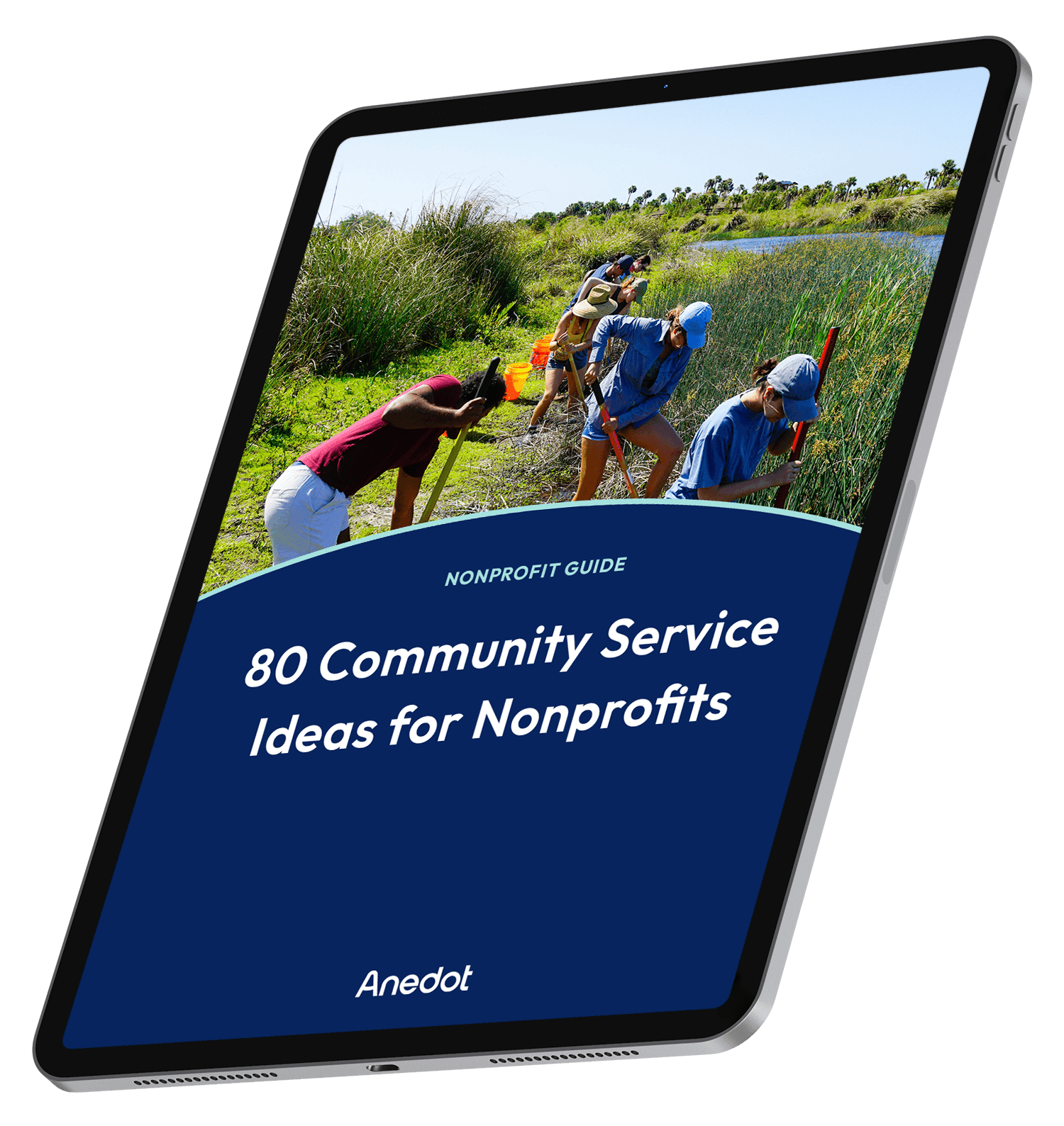
80 Community Service Ideas for Nonprofits
